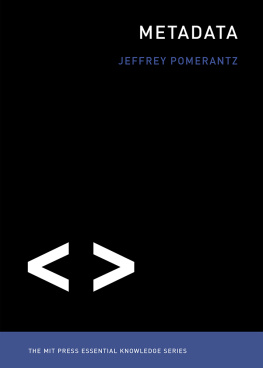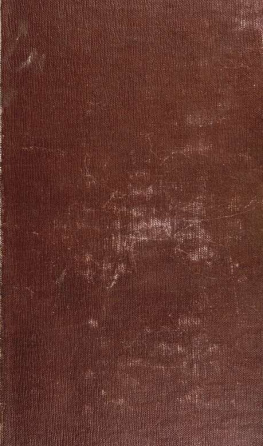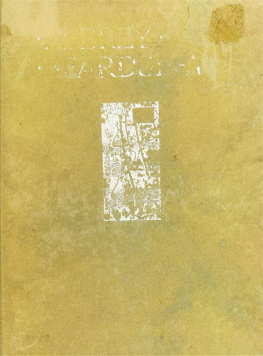PUBLIC HEALTH REPORTS
VOL. 31 NOVEMBER 17, 1916. No. 46
THE TRANSMISSIBILITY OF PELLAGRA.
EXPERIMENTAL ATTEMPTS AT TRANSMISSION TO THE HUMAN SUBJECT."
By Joseph Goldbeeger, Surgeon, United States Public Health Service.
There is a very widely held belief, at least in the United States, that pellagra is a communicable disease. The evidence in support of this is almost wholly indirect and consists, in the main, of certain analogies to infectious diseases presented by some features of its epidemiology. When critically examined one finds that this evidence either completely falls or that it is susceptible of an entirely different interpretation. 2 The only direct evidence in favor of this view that
1 Read at the meeting of the Southern Medical Association, Atlanta, Ga., Nov. 16, 1916.
2 A discussion of the literature is reserved for a later communication. In the meantime the reader will find the following of interest: Goldberger, 1915, Vedder, 1916, and Voegtlln, 1914.
calls for serious consideration is the report by Harris (1913), of New Orleans, of a successful inoculation of a monkey with a nitrate from pellagrous lesions.
The very extensive and comprehensive monkey inoculations by Lavinder and Francis (1914), like those of a number of other workers, including the later (unpublished) work 1 of Harris himself, have failed to confirm this report.
In order to throw further and, if possible, conclusive light on this subject the writer planned to test the question of the infectivity of the disease by experiment on an animal species known to be susceptible, namely, man himself.
This was made possible by the cooperation of a number of my colleagues and associates who, after being informed of the problem, freely volunteered to submit themselves to experiment. It was originally planned to carry out this test during 1915 concurrently with r, test of the role of diet in the production of pellagra (Goldberger and Wheeler, 1915), to which a group of convicts were at that time being subjected. The pressure of other work, however, made it necessary to defer this phase of the investigation until the spring of the present year.
Some 20 individuals volunteered to submit themselves to experimentation. It was not practicable, however, to utilize more than 1G of them. These included 1 woman.
They varied in age from 26 to 42 years. Four were 26 to 29, 9 from 30 to 39, and 3 from 40 to 42 years. Thirteen were physicians. They resided in various localities: Eight at Washington, D. C.; 1 at Columbia, S. C.; 2 at Spartanburg, S. C.; 1 at Milledgeville, Ga.; and 4 at New Orleans, La.
No restraint of any sort was imposed. They were advised to continue their customary habits of life and diet, and were permitted to travel freely in attending to their personal or official business.
No attempt was made to avoid " natural infection." Indeed, it should be noted that five of the volunteers by reason of their official duties came into frequent and intimate contact with pellagra in its natural environment. Three, including the woman, have come into known contact with cases of the disease, while four others have lived for considerable periods in a locality (New Orleans) where casual contact with the disease was at least a possibility.
In the appended list of the volunteers will be found the age, location of residence, and an indication of the experiment or experiments in which each participated.
1 Communicated at a meeting of Louisiana health officers, New Orleans, July, 1915.
The materials used were blood, nasopharyngeal secretions, epidermal scales from pellagrous skin lesions, urine, and feces. The blood was administered by intramuscular or subcutaneous injection, the secretions by application to the mucosa of the nose and nasopharynx, scales, and excreta by mouth.
In order to reduce gastric acidity and thus minimize the possibly germicidal effect of the gastric juice, the ingestion of scales and excreta was preceded by a dose of from 10 to 20 grains of sodium bicarbonate. The ingesta were always taken on an otherwise empty stomach.
The materials whose infectivity was tested were obtained from 17 cases of pellagra of various types and of different grades of severity, including three fatal cases. A list is appended in which the pertinent data relating to each case are given.
The patients were seen and the experiments performed at different places. One, a fatal case, was seen at the Washington Asylum Hospital, Washington, D. C; 1 at the Charity Hospital, New Orleans, La.; 3 at the State Hospital for Insane at Columbia, S. C.; and 12, including 2 fatal cases, at Spartanburg, S. C. The volunteers participating did not in all instances reside at the place where the experiment was performed, but assembled there at a specified time. This applies particularly to the experiments at Spartanburg, S. C.
As will appear from the details next to be presented, the infectivity of the blood was tested twice, of nasopharyngeal secretions twice, of scales three times, and by reason of the alleged controlling influence of methods of sewage disposal in the propagation of the disease the infectivity of both urine and feces was tested six times. Two or more of these tests were made on seven different occasions. In presenting the details of the experiments it seems best to consider the individual experiment under the group of which it formed a part on one of these seven occasions. The groups are considered in their chronological sequence. A tabular summary is appended.
Experiment Group No. 1.
On April 25, 1916, blood and nasopharyngeal secretions were obtained from a patient (case No. 1) with a moderately acute first attack of the disease at the United States Pellagra Hospital, Spartanburg, S. C, and administered to two volunteers, G-J and W-GA.
(a) Blood. The blood was drawn from a vein at one of the elbows, defibrinated, and 5 c. c. were injected without delay into the left deltoid of W-GA and 6 c. c. into that of G-J.
(b) Secretions. -Secretions were obtained by wiping out the nose and nasopharynx of the patient with a cotton swab and transferred
by at once rubbing this over the mucosa of the nose and nasopharynx of the volunteer. A separate swab was used for each.
Effects. Both men felt some soreness and stiffness for a day or two in the muscle into which the blood was injected; otherwise nothing was observed.
Experiment Group No. 2.
On April 28, epidermal scales and urine were obtained from each of two patients and feces from a third at the State Hospital for Insane at Columbia, S. C.
Of the two patients furnishing both scales and urine, one (case No. 3) was a severe first attack and the other (case No. 4) a mild second attack. The patient furnishing the feces (case No. 2) was suffering from a severe attack and was having four soft bowel movements a day.
(a) Scales. The scales were obtained by scraping the affected areas of the skin and, combined, weighed, it is estimated, about 0.1 to 0.2 gms.
(&) Urine. The urine was a fresh catheter specimen in each case.
(c) Feces. The feces specimen was obtained with the aid of a simple water enema and was liquid.
The scales with about 4 c. c. of each specimen of urine and with about the same quantity of the liquid feces were worked up into a pilular mass with wheat flour and in this form swallowed by volunteer G-J, 30 minutes after taking 20 grains of sodium bicarbonate and about 1 to 1\ hours after collecting. After swallowing this mass another dose of 20 grains of sodium bicarbonate was taken. The alkali was intended to reduce gastric acidity and thus perhaps favor infection.
Effects. For several days after the ingestion of the foregoing materials this volunteer experienced some light epigastric fullness and eructations of gas after a meal. On the third day a diarrhea with frequent, painless, watery, and rather gaseous evacuations developed. The diarrhea lasted about a week. It was still present on May 7, on which date, as will presently appear, this volunteer participated in another experiment which included the ingestion of scales, urine, and feces.






